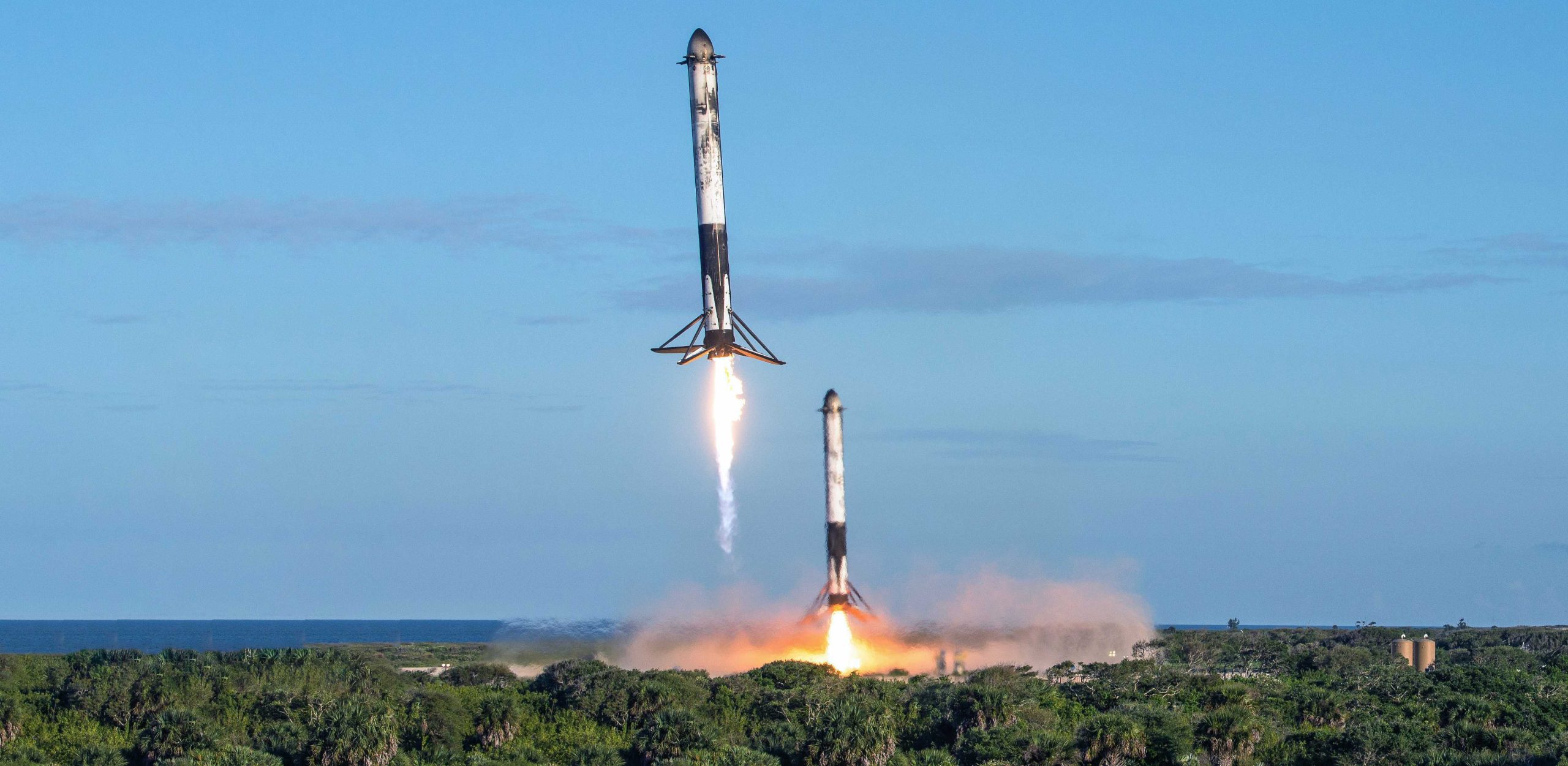
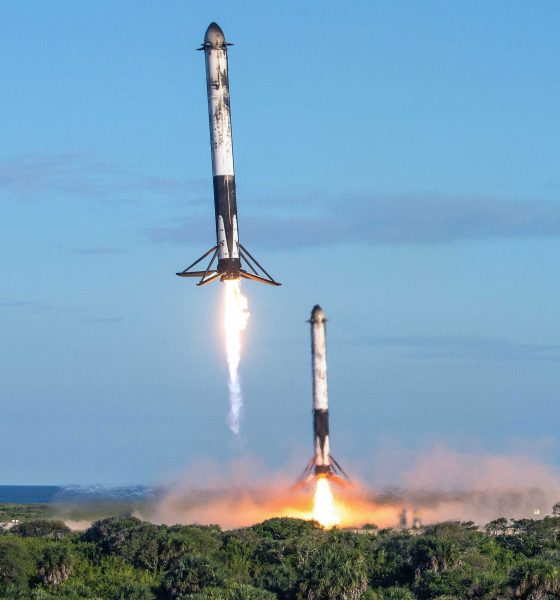
News
SpaceX’s Elon Musk talks Starship heatshield, rocket landings on Joe Rogan podcast
In a multi-hour February 2021 interview with Elon Musk himself, Joe Rogan inexplicably told the famous engineer and CEO that he had never seen a SpaceX rocket landing.
Of course, the 200+ minute conversation did produce a few minor tidbits of interesting information about SpaceX (and much more about Tesla projects), but Rogan’s statement that he’d never seen a SpaceX rocket landing before stole the limelight by a long shot.
SpaceX landed its first Falcon 9 booster – to an extraordinary amount of fanfare – in December 2015. In the five years since that breakthrough, SpaceX has successfully landed Falcon boosters 73 more times. A full 26 of those landings occurred in just the last 12 months. Falcon Heavy – responsible for spectacular, crowd-favorite performances – completed three dual-booster landings and one triple-booster landing between February 2018 and June 2019.
It’s not unimaginable that almost every single human on Earth with some level of access to the internet or social media is at least vaguely aware of or has watched videos of SpaceX landing rockets. To be clear, it is an unequivocal fact – including past comments on landings from Rogan himself – that Rogan has watched SpaceX land Falcon boosters at least once, if not several times. The only real takeaway, fellow readers, is that heavy, long-term drug use is inadvisable.
Cringeworthy moments aside, the interview did produce a select few minor details that weren’t explicitly known before. Most notably, Musk briefly discussed the challenge of developing a heat shield capable of safely returning orbital Starships back to Earth and revealed the main issue that SpaceX is currently working on.
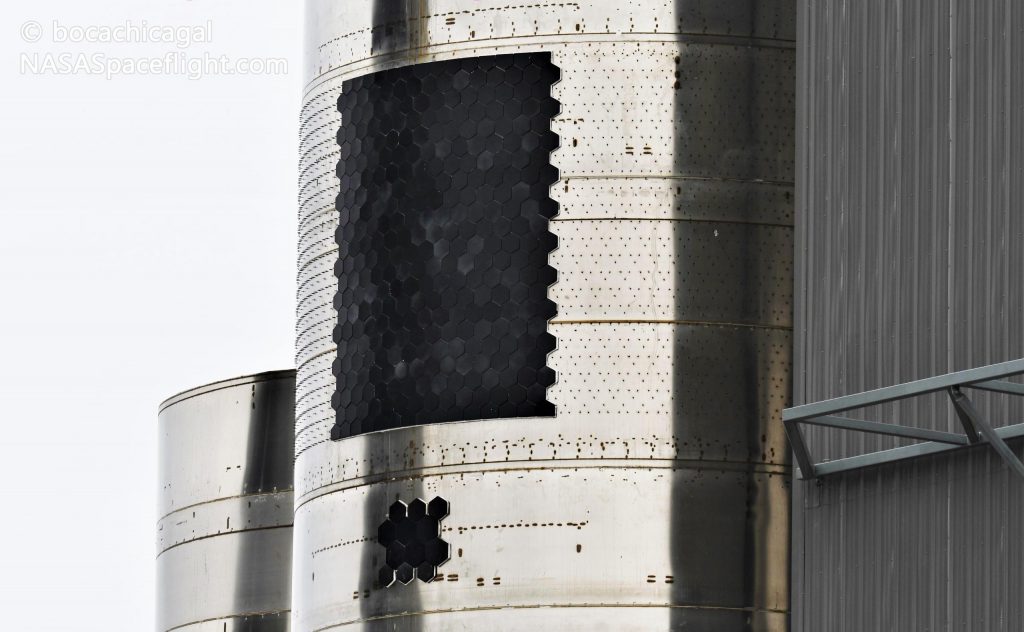
Over the last six or so months, SpaceX has been gradually expanding small installations of heat shield tiles on Starship prototypes, ranging from vehicles that never left the ground to high-altitude Starships SN8 and SN9. Those tile installations have grown from a handful (4-8 on Starhopper in 2019) to literal hundreds on the most recent Starship completed by SpaceX.
During earlier ground testing and more recent hop tests with Starships SN5 and SN6, some of those ceramic composite tiles actually fell off or shattered, perhaps due to vibrations from Raptor engines or mechanical stress caused by Starship shrinking and contracting from thermal expansion. According to Musk, what SpaceX is trying to determine with those coupon-style tests is how to install a heat shield with tiles that are neither too close together or too far apart.
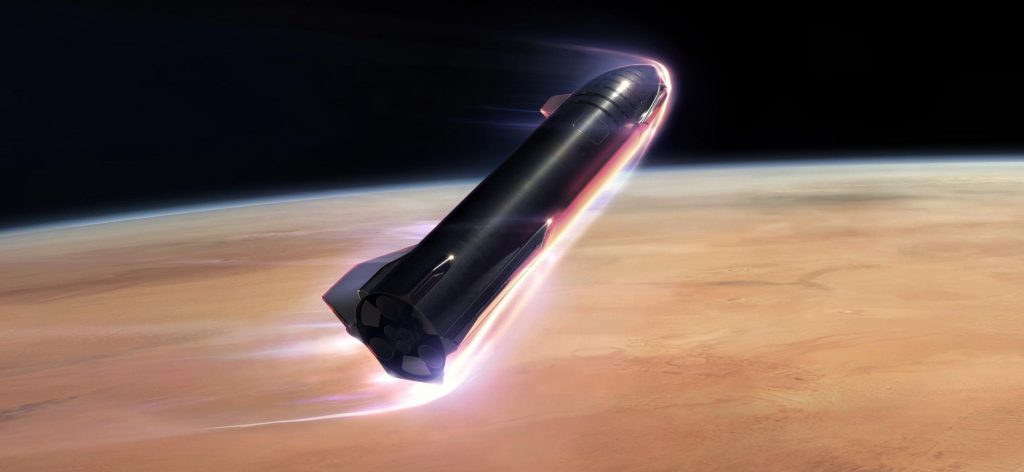
According to Musk, ceramic heat shield tiles placed too close together will ultimately shatter, break, or fall off when subjected to the stresses of Starship operations. Those stresses include the violent vibrations created by rocket propulsion supersonic to hypersonic travel, as well as airframe expansion and contraction that occurs when Starship’s steel hull is cyclically heated and cooled by Raptor burns and cryogenic propellant. In other words, assuming fragile, ceramic tiles are a necessity, they need to be placed far enough apart to avoid all of those possible pitfalls.
On the opposite hand, though, the entire point of Starship’s heat shield is to insulate it from extreme thermal stress during atmospheric reentry. If individual tiles are situated too far apart, superheated gas (plasma) produced during reentry will find its way between those tiles, heating up the structure they’re meant to keep cool. In the case of Starship, its steel hull is more than twice as resilient to reentry heating than comparable vehicles (like the Space Shuttle) with common aluminum frames, but a few millimeters of steel is still not enough to prevent weakening, damage, or outright burn-through in the face of orbital reentry.
In essence, SpaceX has to “get the gaps just right” – not too far apart to protect the airframe from plasma intrusion but not so close together that tiles impact or damage their neighbors as Starship cools and warms.

News
Another Tesla Model 3 variant sold out for January 2026 in China
A look at Tesla China’s order page shows that new Model 3 LR RWD orders now have an estimated delivery date of February 2026.
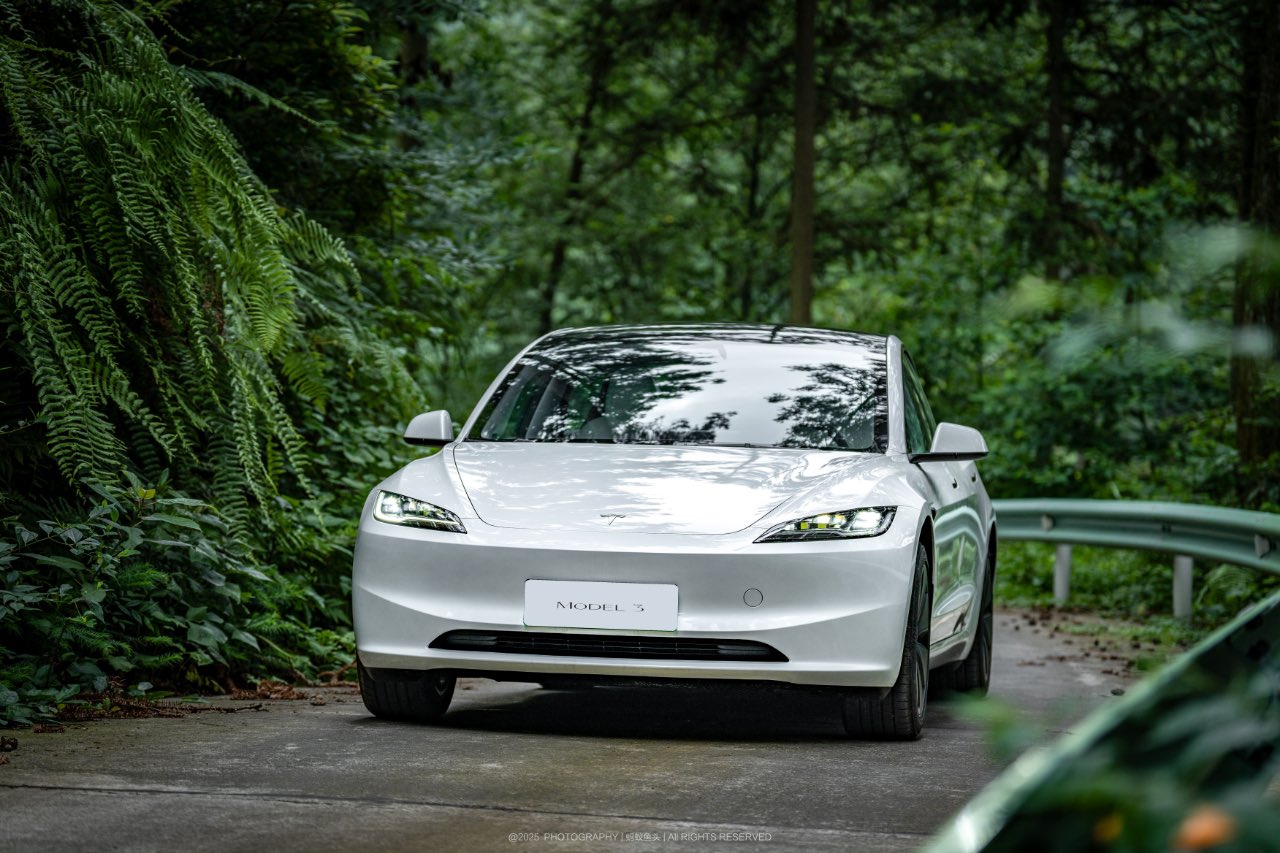
Another Tesla Model 3 variant in China appears to have sold out for January 2026, with the vehicle now showing an estimated delivery date of February 2026 for new orders. This bodes well for the all-electric sedan, which has maintained notable sales despite more affordable rivals like the Xiaomi SU7 and its crossover sibling, the Model Y.
Model 3 LR RWD joins February 2026 queue
A look at Tesla China’s order page for the all-electric sedan shows that new Model 3 Long Range Rear Wheel Drive orders now have an estimated delivery date of February 2026. Priced from RMB 259,500 ($36,810), the LR RWD sits as the second-lowest-priced trim in Tesla China’s four-variant Model 3 lineup. The move follows a similar delivery timeframe for the Model 3 Performance, which remains the most expensive option for the vehicle, as noted in a CNEV Post report.
The estimated delivery dates of the two remaining Model 3 variants remain unchanged for now. The base RWD version, starting at RMB 235,500, and the LR AWD variant, priced from RMB 285,500, both continue to list estimated delivery times of 4-6 weeks. Tesla China, for its part, has continued to list in-stock Model 3 vehicles and is actively encouraging buyers to select inventory units for delivery before the end of the year.
Model Y delays and policy shifts
Delivery timelines for the Model Y in China are also stretching into 2026. All customized Model Y variants now show February 2026 as their estimated delivery date, except for the entry-level version, which still lists January 2026. Tesla has been urging customers since November to prioritize purchasing inventory vehicles, a push aimed at maximizing year-end deliveries.
Timing matters for Chinese buyers due to upcoming changes in government incentives. China’s new energy vehicle purchase tax exemption will be scaled back in 2026, which means customers who take delivery next year could face higher tax costs compared to those who are able to receive vehicles before the end of the year.
As per data from the China Passenger Car Association, Tesla recorded retail sales of 73,145 vehicles in November, down 0.47% year over year. From January through November, Tesla’s retail sales in China totaled 531,855 units, a 7.37% year-over-year drop.
News
Wedbush’s Dan Ives sees ‘monster year’ ahead for Tesla amid AI push
In a post on X, the analyst stated that the electric vehicle maker could hit a $3 trillion market cap by the end of 2026 in a bullish scenario.

Wedbush analyst Dan Ives is doubling down on Tesla’s (NASDAQ:TSLA) long-term upside. In a post on X, the analyst stated that the electric vehicle maker could hit a $3 trillion market cap by the end of 2026 in a bullish scenario, thanks to the company’s efforts to develop and push its artificial intelligence programs.
An aggressive valuation upside
Ives, Wedbush’s global head of tech research, stated in his post that Tesla is entering a pivotal period as its autonomy and robotics ambitions move closer to commercialization. He expects Tesla’s market cap to reach $2 trillion in 2026, representing roughly 33% upside from current levels, with a bull case up to a $3 trillion market cap by year-end.
Overall, Ives noted that 2026 could become a “monster year” for TSLA. “Heading into 2026, this marks a monster year ahead for Tesla/Musk as the autonomous and robotics chapter begins. We believe Tesla hits a $2 trillion market cap in 2026 and in a bull case scenario $3 trillion by end of 2026… as the AI chapter takes hold at TSLA,” the analyst wrote.
Ives also reiterated his “Outperform” rating on TSLA stock, as well as his $600 per share price target.
Unsupervised Full-Self Driving tests
Fueling optimism is Tesla’s recent autonomous vehicle testing in Austin, Texas. Over the weekend, at least two Tesla Model Ys were spotted driving on public roads without a safety monitor or any other occupants. CEO Elon Musk later confirmed the footage of one of the vehicles on X, writing in a post that “testing is underway with no occupant in the car.”
It remains unclear whether the vehicle was supported by chase cars or remote monitoring, and Tesla has not disclosed how many vehicles are involved. That being said, Elon Musk stated a week ago that Tesla would be removing its Safety Monitors from its vehicles “within the next three weeks.” Based on the driverless vehicles’ sightings so far, it appears that Musk’s estimate may be right on the mark, at least for now.
News
Production-ready Tesla Cybercab hits showroom floor in San Jose
Tesla has implemented subtle but significant updates to both the Cybercab’s exterior and interior elements.
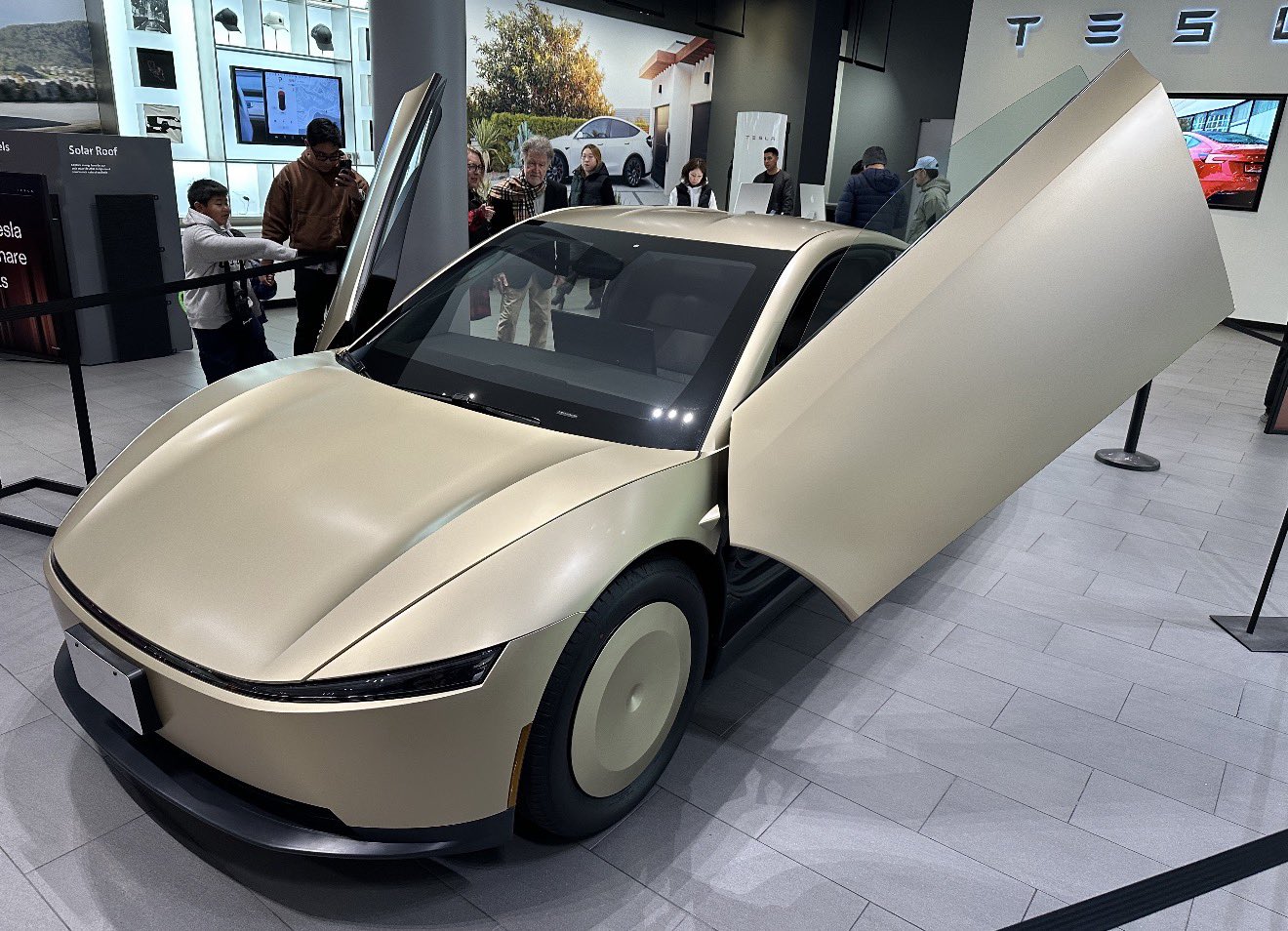
Tesla has showcased what appears to be a near-production-ready Cybercab at its Santana Row showroom in San Jose, California, giving visitors the closest look yet at the autonomous two-seater’s refined design.
Based on photos of the near-production-ready vehicle, the electric vehicle maker has implemented subtle but significant updates to both the Cybercab’s exterior and interior elements, making the vehicle look more polished and seemingly more comfortable than its prototypes from last year.
Exterior and interior refinements
The updated Cybercab, whose photos were initially shared by Tesla advocate Nic Cruz Patane, now features a new frameless window design, an extended bottom splitter on the front bumper, and a slightly updated rear hatch. It also includes a production-spec front lightbar with integrated headlights, new wheel covers, and a license plate bracket.
Notably, the vehicle now has two windshield wipers instead of the prototype’s single unit, along with powered door struts, seemingly for smoother opening of its butterfly doors. Inside, the Cybercab now sports what appears to be a redesigned dash and door panels, updated carpet material, and slightly refined seat cushions with new center cupholders. Its legroom seems to have gotten slightly larger as well.
Cybercab sightings
Sightings of the updated Cybercab have been abundant in recent months. At the end of October, the Tesla AI team teased some of the autonomous two-seater’s updates after it showed a photo of the vehicle being driven through an In-N-Out drive-through by employees in Halloween costumes. The photos of the Cybercab were fun, but they were significant, with longtime Tesla watchers noting that the company has a tradition of driving its prototypes through the fast food chain’s drive-throughs.
Even at the time, Tesla enthusiasts noticed that the Cybercab had received some design changes, such as segmented DRLs and headlamps, actual turn signals, and a splitter that’s a lot sharper. Larger door openings, which now seem to have been teasing the vehicle’s updated cabin, were also observed at the time.








